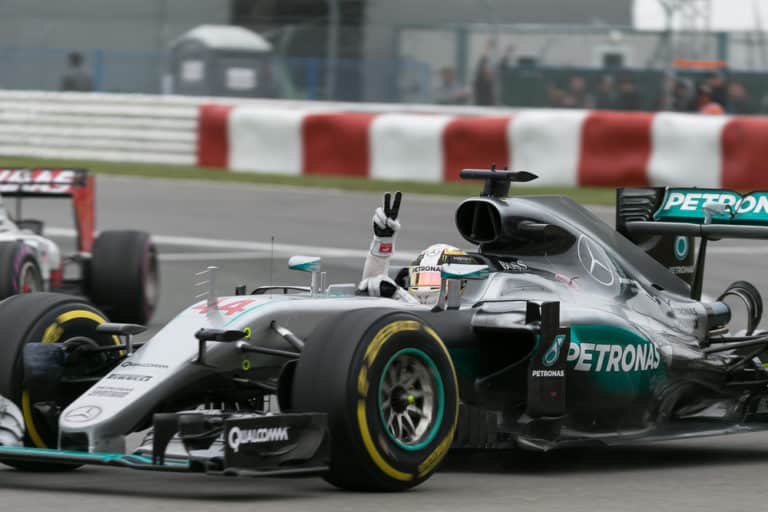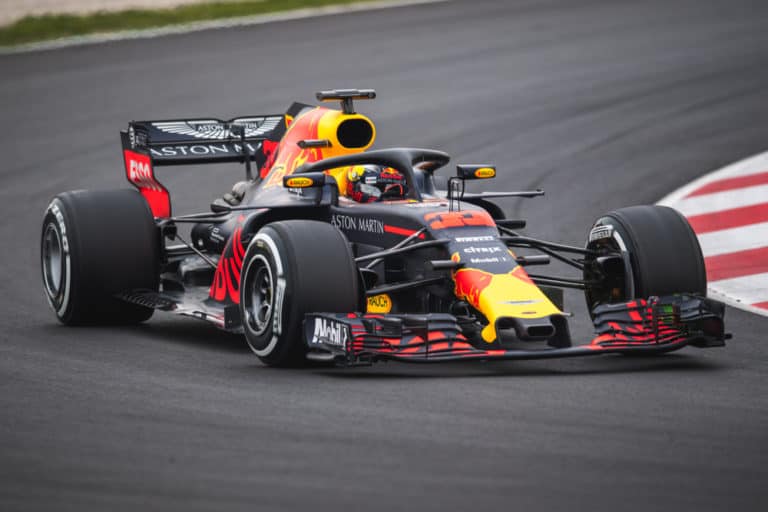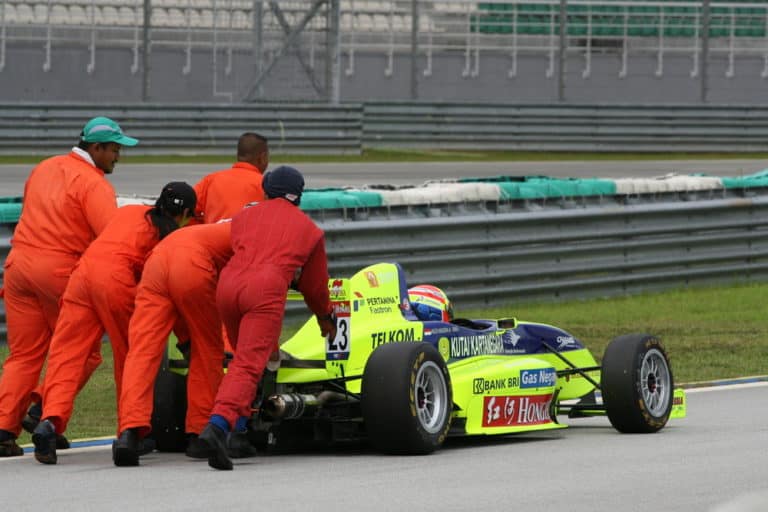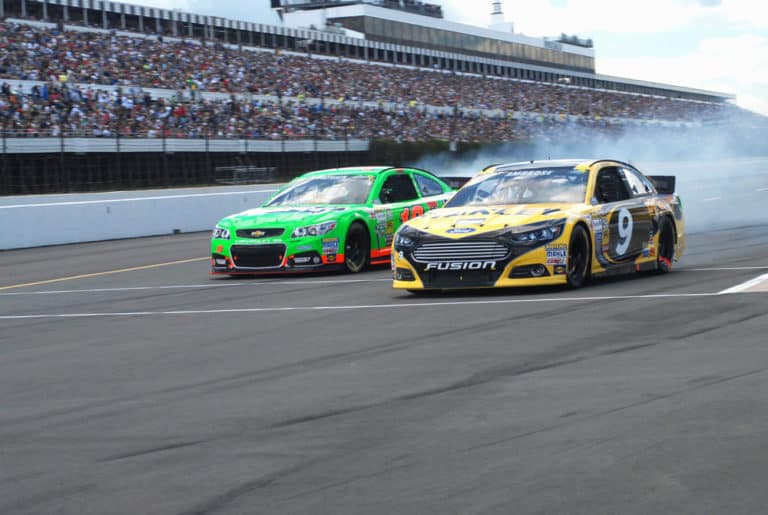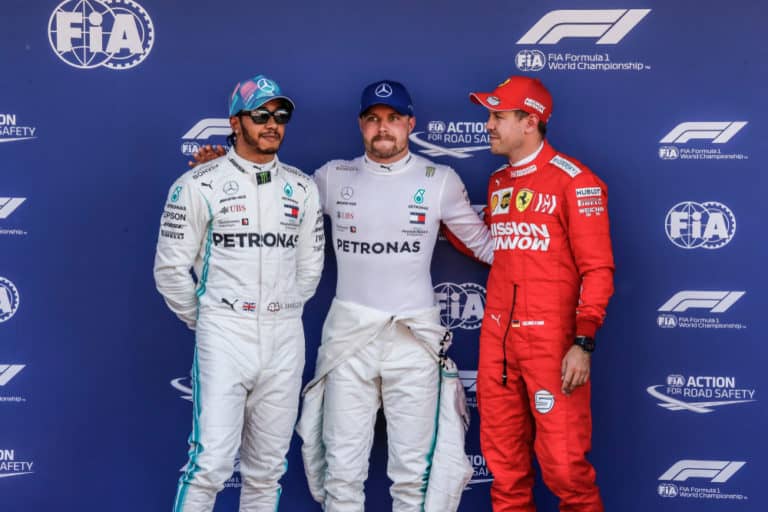As you know, Formula One is one of the biggest sports in the world. The best racers all around the globe drive their teams’ cars as fast as possible around the track to finish first and hopefully accumulate enough points to win the Championship at the end of the season. So, how many races are there in any particular Formula One season?
Although the amount of races per season has varied over the years, the recent average of official F1 races in a season is 22. These 22 races are the ‘final’ rounds of hundreds of practices and qualifiers at 22 different racing circuits. They are the races that count for points in the Championship.
However, although there are 22 ‘official’ races in a single Formula One season, there are many more times that the drivers get on the track before the final race day for that week. Meaning that there are not only 22 races in a Formula One season if you include all racing that occurs in a season. So, fasten your seatbelt to learn how many races there really are in a Formula One season.
If you’re looking for some F1 merchandise, check out the awesome stuff at the official F1 store here.
How Many Grands Prix Occur In An F1 Season?
When defining how many races occur in a particular Formula One season, you need to define what you mean by a ‘race.’ A race is defined as a competition between humans, vehicles, or animals to see who or what can make their way around a set course the fastest over a determined number of laps.
In the case of Formula One, the racers come up against each other on a selected racing track on more than one occasion for that specific track, not just on the final ‘Grand Prix.’ However, the Grand Prix that happens on one day per selected track during an F1 season counts for points generally referred to as the only ‘race’ for that week.
The Grand Prix is the final race that decides the ultimate winner for the track in a specific ‘race week’ in Formula One. And yes, the plural for Grand Prix is ‘Grands Prix.’ This happens once per race week, often on a Sunday, but may change due to external reasons. This race allows the drivers to showcase their abilities and try their best to make it through all the laps at the top of the race leaderboard.
There are 22 Grand Prix races in a season. This has varied before, but recently it has stayed at this number consistently. This means that all 20 drivers in Formula 1 have an opportunity to drive in a Grand Prix once a week at 22 different tracks all around the globe during the racing season.
The drivers earn points depending on the position they managed to finish in at the end of the race, the time they finished the race in, and the racer that sets the fastest single lap time for the race gets bonus points, regardless of their position. Finishing in the top three spots is referred to as finishing in ‘pole position,’ while first, second, and third place are referred to as ‘P1,’ ‘P2,’ and ‘P3’ respectively.
How Many Races Occur Per F1 Race Week?
Before every Grand Prix in the Formula One season, there is a qualifying round determining which positions each driver will start on the grid for the final race day that week. Since 2006, all qualifying rounds have been done on the Saturday before the Grand Prix on the coming Sunday. However, if the Grand Prix is on a Saturday, the qualifying rounds will commence on a Friday beforehand.
How Does F1 Qualifying Work?
The qualifying session the day before a race lasts for one hour. The first 20 minutes consists of all 20 drivers in the race competing to get the fastest lap time around the track. The slowest five cars are immediately organized into positions 16-20 on the grid. The next 15 minutes include the same process, where the slowest five are organized through positions 11-15. After that, the final 10 minutes determine the grid positions of the fastest 10 drivers through all qualifying rounds.
Since the drivers are competing against one another during the qualifying round, by definition, the qualifying round is considered a race. This effectively means the top 10 fastest drivers during the qualifying race three times on the qualifying day and another time during the Grand Prix.
Once again, there is another type of driving that happens before the Grand Prix. Two days before each Grand Prix, the racers in Formula One get to have practice runs before the qualifying. Before this, the Formula One drivers were not allowed to ever practice on a track included in the Formula One season.
However, some drivers bypass this rule by using older F1 car models to learn the track. There are three available 60-minute practice rounds for Formula One drivers before a race. Two heats the day before qualifying and one heat on the day of the qualifiers. Although, the practice sessions are usually used by the team’s younger drivers in order for them to get some experience.
The practice sessions are vital for the Formula One team as it allows the engineers, mechanics, and other team members to set up the car and brief the drivers according to whatever the track determines. However, practice sessions are not competitive, so these can be excluded from being called ‘races.’
Therefore, if you include qualifying sessions as races, as they are races by definition, each driver in Formula One will have the opportunity to race anywhere between 44 and 88 times during the racing season.
What Are Sprints In Formula One?
The Grand Prix that happens on a Sunday is a very long race. Since the cars drive so fast for so long, you cannot expect the tires and other parts of the car to be perfectly healthy throughout the race. This is why you see Formula One cars going into the ‘pits,’ They can replace old items with new ones to keep them racing as fast as possible.
However, there is a sprint event three times a season (for most seasons, anyway). This will happen the day before a Grand Prix, and the qualifying session will occur the day before the sprint. The sprints were designed as a showcase event so that the drivers and teams could race as fast as possible against one another for a shorter amount of time.
The drivers are required to use soft tires on their cars during the sprints. Soft tires are the tires that allow them to go the fastest but also are the ones that have the least traction and wear much easier than other tires. However, if it is raining during the sprint session, the teams are allowed to drive in other tires.
Based on the fact that the sprints were designed to allow the cars to go as fast as possible, the race distance needed to be adjusted to be shorter. As a result, the sprints will be roughly 100 kilometers long, resulting in a distance much lower than that of a Grand Prix. In addition, this prevents the drivers from needing to pit anytime during the race. Instead, they can use their soft tires for the duration of the race, making it the fastest possible race they can do.
Does A Sprint Count As A Race In Formula One?
According to the definition of a race, then yes, a Formula One sprint does count as a race. It is even more qualified as a race than the qualifying rounds are. However, unlike the qualifying rounds, the sprints may count for points on the championship leaderboard. Only the top three positions get points, with first place getting three points and last place getting one point.
The final grid position of the sprints on the day before the Grand Prix will define the starting grid positions for each driver on the day of the Grand Prix. Instead of the qualifying round being the decider of the grid positions for the Grand Prix, the qualifying rounds will define the starting positions on the grid for each driver in the sprints the next day.
Since the drivers compete around a track during the sprints and the sprints count for actual points on the leaderboard, the sprints can be regarded as races. This means that a Formula One driver can experience between 47 and 91 races per Formula One Championship season, including the qualifying rounds.
How Does The Grand Prix Work In Formula One?
As you know, the main decider for who the winner of the entire Formula One Championship is is the Grands Prix. During an F1 season, a Grand Prix is likely to happen every weekend, normally occurring on a Sunday. However, there are occasional short breaks for the teams and drivers, and some countries require the Grand Prix to be on a Saturday rather than a Sunday.
Suppose there are 22 Grands Prix in any specific F1 season. In that case, the drivers will likely end up racing at 22 different tracks all around the world within that season. There will rarely be a chance that two Grands Prix will occur at the same track within a singular season, but there will likely be multiple races in a single country. The variability of the tracks is known to be what makes it so challenging for all the drivers and is the ultimate test to see who is the best driver with the best team.
The requirements for a track to hold a Grand Prix are relatively thorough. The list of requirements that the FIA produces is extremely long, but some main points are of the most importance. Firstly, the length of the track.
As you have probably seen, the number of laps in an F1 race varies. This is because the number of laps allows each driver to drive a minimum of 300 kilometers during the race. In addition to that, an individual lap has to cover a distance of at least 3.5 kilometers, except for the Monaco Grand Prix. The FIA made an exception for the Monaco track as they only covered 260 kilometers during the race.
The track also cannot have any straights longer than 2 kilometers, which is why the Nürburgring is not an F1 track, despite being one of the most famous tracks in the world. In addition, there are also many requirements for the radius of the first corner, width of the starting grid and pit zone, amount of turns on a track, and many others that are included in the FIA’s extremely long list.
These requirements ensure that while the Grand Prix is the toughest racing situation each weekend for all the drivers, but also ensures that the drivers have enough safety and prevent any unnecessary incidents. Depending on the position you finish in during a Grand Prix, you will either be awarded points or awarded none at all.
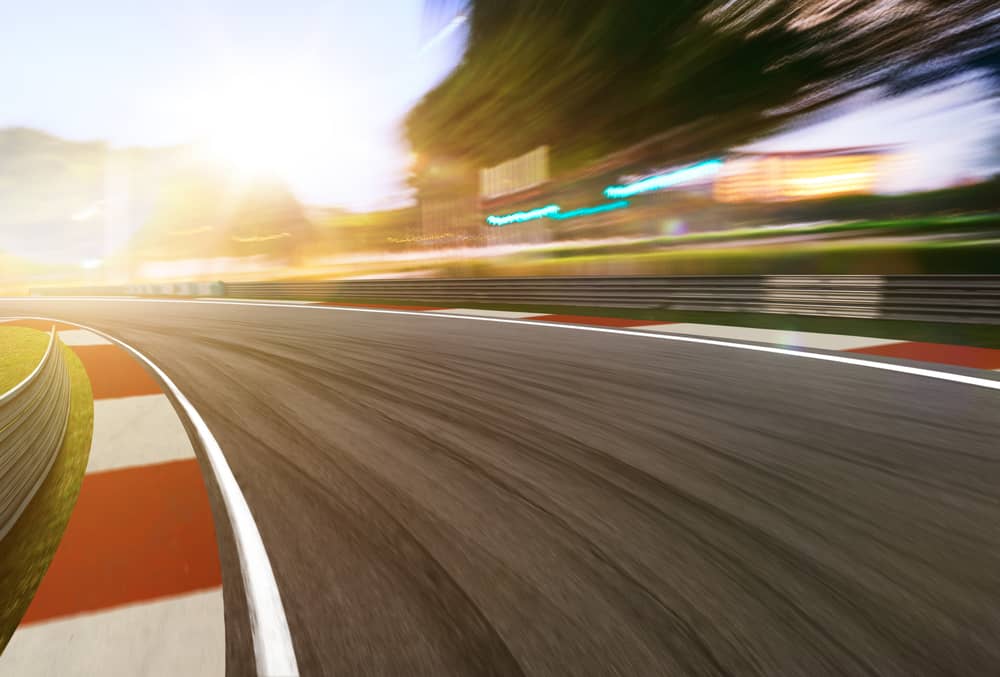
How Long Is A Formula One Season?
The length of a Formula One season has obviously changed throughout the years, as there have been an increasing amount of Grand Prix weekends per Formula One season. Currently, since there are 22 Grands Prix in the 2022 season (initially 23 Grands Prix, but errors occurred that caused them to cancel one race), the F1 season is roughly between eight and nine months long.
The 2022 season, for example, starts at the famous Bahrain Grand Prix on the 20th of March and ends on the 20th of November at the Abu Dhabi Grand Prix. However, there are more than 22 weeks between the starting and ending dates of the season, but only 22 Grand Prix weekends. This is because, like you and me, even Formula One drivers and teams deserve a break during the season.
There are a few weekends where there are no Grands Prix, but this changes per season as it always depends on the plans the Formula One planning committee can organize. For example, a certain racetrack may not be available on a specific weekend, so they will schedule the Grand Prix for the week after.
During the Formula One Championship season, a mid-season break is given to the teams and drivers, giving the people who work in Formula One (but not for any teams) a break. This break is often between three and four weeks long, giving all the people working in Formula One a time to rest at home or work towards the next part of the season.
The slow and gradual increase in the length of the seasons due to the increase in races has posed a few problems for the people working in Formula One. This includes the drivers, team members, and other members that work for Formula One and outside of the teams.
Formula One teams constantly work between races to try to get the best out of their drivers and vehicles while also having to work on plans and strategies for the upcoming Grand Prix weekend. The Formula One staff members are also constantly working between races to ensure that the next race weekend is planned and executed perfectly.
Since many of the races are in different countries, many team members and Formula One staff members travel very often. This makes it tough for drivers, team members, and staff members to get home between the different races to see their families and homes. As a result, the only breaks they will possibly get are the mid-season breaks and, if there is a longer break between races than a week.
This is why the increase in the length of the season is seen to become a problem. For eight to nine months, the people that work in Formula One rarely have any time to be with their families or just to be back home. They may be grateful to have a job that allows them to travel the world as much as they do, but everybody wants to return home once in a while.
On the contrary, there is a long list of positive outcomes of the extended Formula One season. Most importantly, there are more races per season, meaning that each driver and team has a greater chance to get more points in a season due to many races. Furthermore, more races also result in more revenue for the entire Formula One organization, allowing the staff members to have higher salaries (for example) in exchange for their time away from their homes.
Many arguments for and against the different lengths of a Formula One season have been brought forward. Still, it has been decided that eight to nine months is the optimal length for the 2022 Formula One Championship Season.
How Do F1 Races Relate To Points And Standings?
Like any sport, the aim of the game is to get as many points as possible. Points in Formula One are awarded depending on the driver’s position at the end of each race (with the occasional opportunity to earn an extra small number of points). The driver who accumulates the highest number of points at the end of the season is announced as the World Champion.
Alongside the Formula One Championship, which has always been designed for drivers, there is another championship. This is called the Constructors’ Championship. This competition is aimed to celebrate the best team in Formula One, instead of a driver. For example, in the 2021 season, Max Verstappen of Red Bull won the player’s version of the Championship, while Mercedes won the Constructors’ Championship.
During a Grand Prix, points are only awarded to the top 10 drivers on the grid at the end of the race, with the driver that finishes first winning the most points and the driver in tenth winning the least possible amount. Teams accumulate points by adding the points that their two drivers achieve. Therefore, each team can only receive a possible maximum of 44 points per Grand Prix.
Since 2019, it is also possible for a driver and team to earn an extra bonus point at the end of the race if they achieve the fastest lap out of all drivers in the race. However, this bonus point only counts if the driver finishes within the top 10 drivers on the grid at the end of the specified Grand Prix.
First place during a Grand Prix will get a driver 25 championship points, and each driver will receive fewer and fewer points. The table below describes how many points each driver in the top 10 will receive:
| 1st Place | 25 Points |
| 2nd Place | 18 Points |
| 3rd Place | 15 Points |
| 4th Place | 12 Points |
| 5th Place | 10 Points |
| 6th Place | 8 Points |
| 7th Place | 6 Points |
| 8th Place | 4 Points |
| 9th Place | 2 Points |
| 10th Place | 1 Points |
Suppose a driver changes teams during a season. In that case, it does not negatively affect any previous results for him or the team. This is because the driver will keep the points he earned with the last team as he moves to the new team, while the original team will keep the points that the driver earned when he was with them even after he moves.
We also know that drivers and teams can earn points from the sprints happening three times during the 2022 season. The driver in first will receive 3 bonus points, the driver in second will receive 2 bonus points, and the driver in third will receive 1 bonus point.
Conclusion
The length of each Formula One season has heavily varied over the years. Originally, there were roughly only six races per season. The current 2022 season has a record 23 scheduled Grands Prix. But as we have uncovered, the Grand Prix that happens almost every weekend during the nine-month season is not the only racing that occurs.
By the definition of a race, the qualifying and the sprints count as races too. The sprints happen three times a season, and the qualifiers occur before each Grand Prix. This means that each driver (in the 2022 season, at least) has the opportunity to race anywhere between 47 and 91 races within the given Formula One season.


